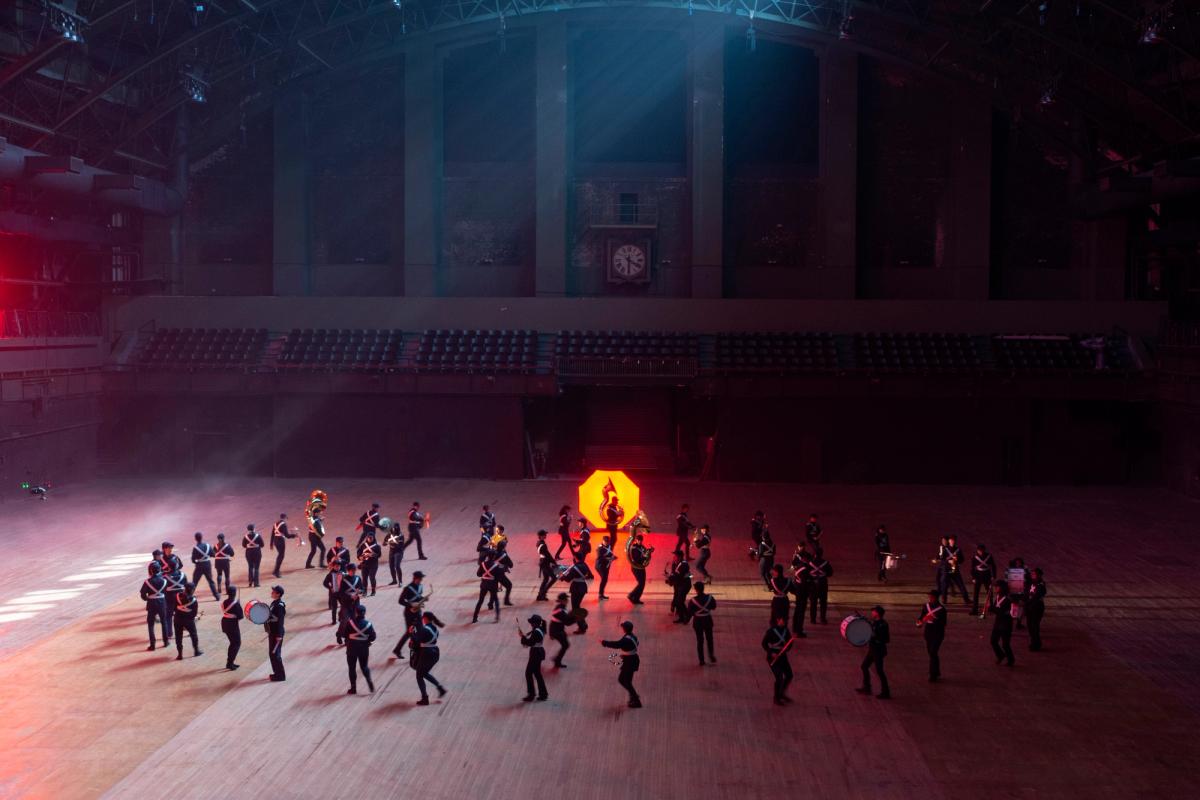Hito Steyerl's research-intensive projects take on some of the biggest ethical and social issues of our time, from growing state surveillance to the rise of artificial intelligence—and now she is taking on one of New York's biggest art spaces. Her commission Drill (2019) at the Park Avenue Armory, filling the 55,000 sq. ft Wade Thompson Drill Hall, looks at the history of increasing gun violence and militarisation in the US. The huge, three-screen video weaves together the narratives of gun-crime victims and activists; a dramatic reading of the history of the Armory building and the founding of the country's National Rifle Association; and footage of the Yale University Precision Marching Band dancing along to "gun violence sonification data", says the artist. Tracks of lights running across the floor also flash along to the beat, which sounds like gun fire echoing across the cavernous space. "The starting point for Drill was being taken to the former shooting range in the basement of the Armory," Steyerl says. "I was blown away—I’m a foreigner and I’m probably naïve but I’ve never been to an art space before that has a former shooting range.” The Armory is also showing several other works by Steyerl in spaces on the ground floor, including her seminal piece Is the Museum a Battlefield? (2013), making Drill (until 21 July) the artist's most extensive US exhibition to date.
Continuing the theme of probing existential questions, the current group of commissions at the Shed, titled Collision/Coalition (until 25 August), asks "What is the role of art in the face of political, social, and economic power?" says the senior curator Emma Enderby. The programme brings together new works by Tony Cokes and Oscar Murillo (soon to be joined by a new documentary film about the artist Beatriz González directed by Yanina Valdivieso and Vanessa Bergonzoli, from 31 July), to discuss art’s agency and its subversive power as well as its relationship to money and the market. Cokes is showing bright, textual video works on three large LED screens, two of which look at the relationship of artists and gentrification. But it is Murillo's large immersive installation, apparently inspired by Diego Rivera’s famously censored Rockefeller Center mural conflating socialism and capitalism, that steals the show. The combination of huge, abstract canvases shown alongside small scribbled paper drawings that the artist makes while he travels, play with the ideas of scale and detail.
If you head to the High Line to enjoy the forecasted warm weather, stay the course until you encounter Simone Leigh’s towering bronze sculpture Brick House (until September 2020), located at the Spur, the northernmost section of the disused railway-turned-public space at 30th Street and 10th Avenue. The 16-foot-tall bust of a black woman, whose torso is conflated with the form of what might be a skirt or clay house, is the first of the new High Line Plinth commissions series of large-scale public works. “I love working at this scale—it has made me so happy,” Leigh says. “It involves using your entire body and mind in the creation of the work. It’s thrilling.” Brick House commands attention over the busy roadway, a powerful antidote to the traffic and billboards. “I thought it might be appropriate to have a sculpture that considers beauty as its subject matter in this setting,” Leigh says. “I was thinking about representation of a kind of femininity that I’m more interested in: a femininity that’s based on being solid as opposed to fragile, as well as the complex history of art represented in the sculpture. Benin bronzes were a touchstone in the creation of the work.”


